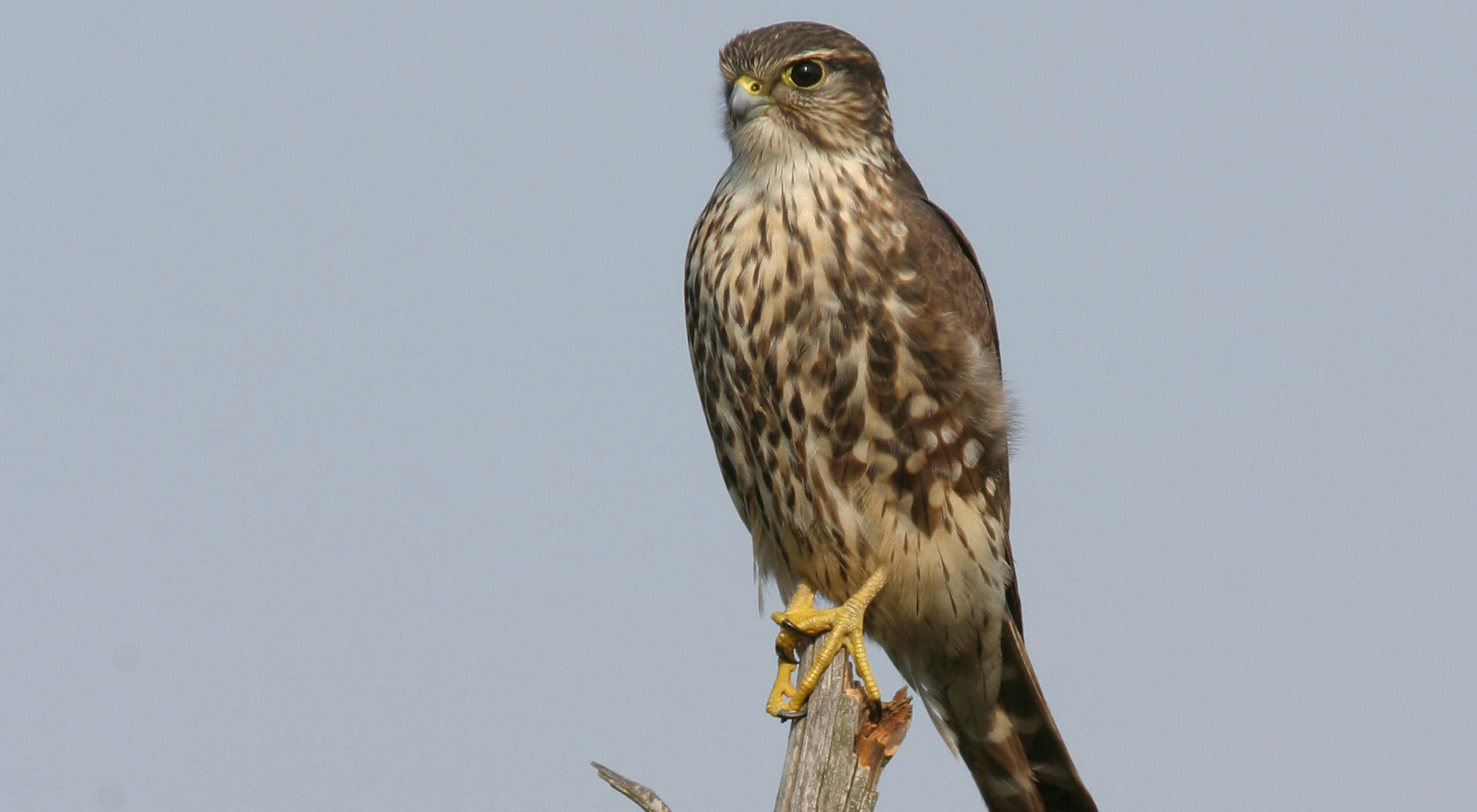This month's Nature Notes was written by Alyssa Nyberg. Alyssa has been managing the Kankakee Sands Native Plant Nursery for the past 15 years.
Lately we’ve had sightings of merlins at Kankakee Sands. Magical wizards at Kankakee Sands?! That would be incredible! But, well, not exactly. The merlins that are being seen are of the avian sort. “Lady hawk” is another name given to this majestic, light-weight, swift bird because in medieval times, it was the bird of choice for female falconers.
This small, handsome falcon is hard to overlook, but sometimes difficult to identify. It is often mistaken for an American kestrel or immature marsh hawk. Merlins are typically 10 to 13 inches in length. It is roughly the size of a blue jay, but much more muscular and stout, and not blue. The male has a grey cap and is grey above, whereas the female has a brown cap and is brown above. Both males and females have white chins, white chests mottled with streaks of brown, and barred tail feathers.
Merlins (Falco columbarius) were seen regularly in the months of November and early December this year at Kankakee Sands. Several were spotted perched on fence-posts scanning the open prairie. Others were observed soaring over the prairie in hot pursuit of their next meal.
Merlins typically spend summer in the northern states and Canada, and overwinter in the southern states, Mexico, and central America. They migrate through the Midwest and eastern U.S. during the change of the seasons.
Because merlins breed in the northern states and Canada, we aren’t likely to witness their complicated courtship behavior in Indiana. That is too bad because during courtship, the male puts on spectacular flight displays, which include such aerial acrobatics as steep dives, twists, glides, rolls and fluttering. A merlin’s call, however, is something that we do hear in Indiana. The call is a high-pitched, loud, repetitive “ki-ki-ki-ki-ki-ki-ki-keee” cackle of a call.
Merlins are extremely strong and fast flyers. They are known to fly thirty miles per hour during long migratory flights, but much faster when chasing their dinner. Their aerial swiftness allows them to surprise, overtake and catch their prey while in flight. A merlin’s diet includes small species of birds such as horned larks, house sparrows, and sandpipers, as well as dragonflies, rodents, bats and reptiles.
Due to the pesticide DDT which softened the shells of eggs and prevented the chicks from hatching, the number of merlins was quite low in the 1960s, as were the numbers of bald eagles and other large birds of prey. With the banning of DDT, numbers of bald eagles, merlins and other birds have begun to rebound. And as merlins adapt to urban environments, their numbers also continue to increase.
Merlins were seen in much greater number at Kankakee Sands this year than ever before. We are thrilled to be a migratory stopover for merlins, and for many other bird species as well. When Kankakee Sands was being planned nearly 20 years ago, one of the goals of the project was to be a migratory stop-over for birds. Success!
As the days continue to get colder, the merlins will be leaving our area in search of warmer weather. But behind they certainly leave a trail of magic on the prairie that we wish to share with you. Wishing you all a magical end of 2017 and an enchanting 2018.
